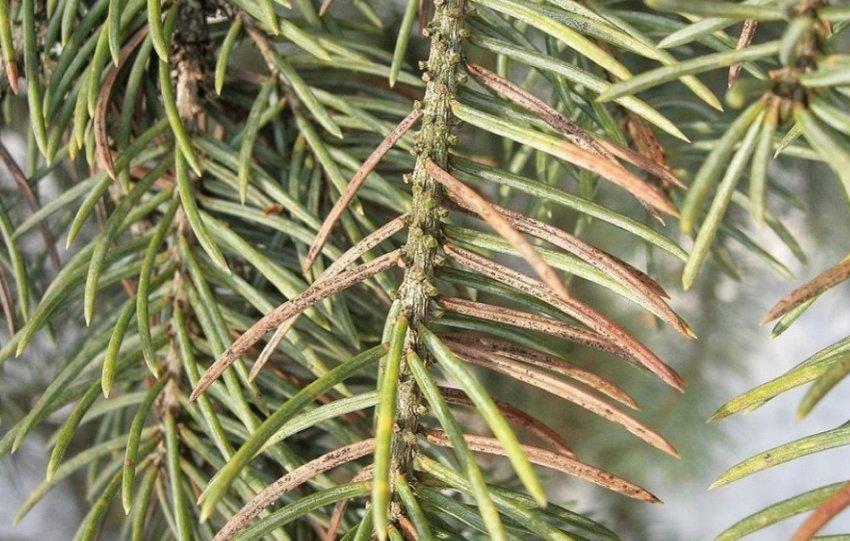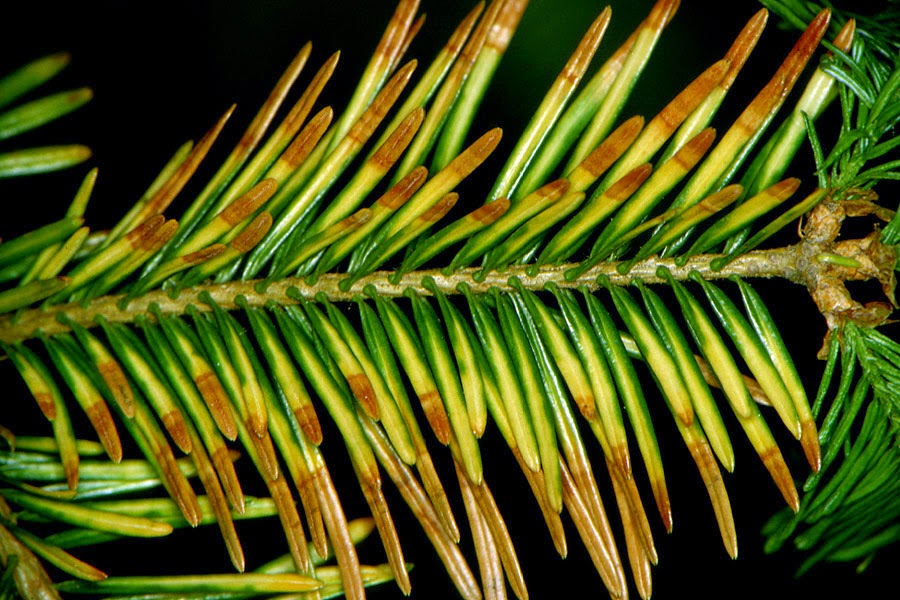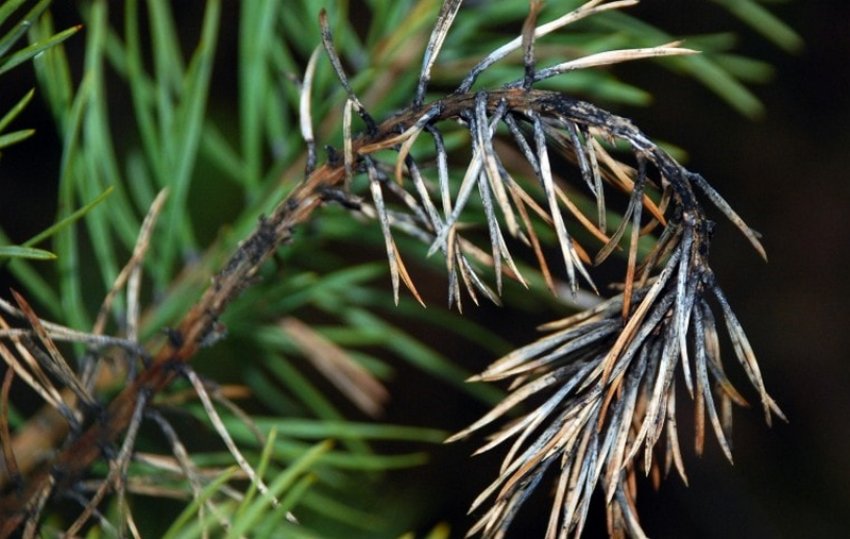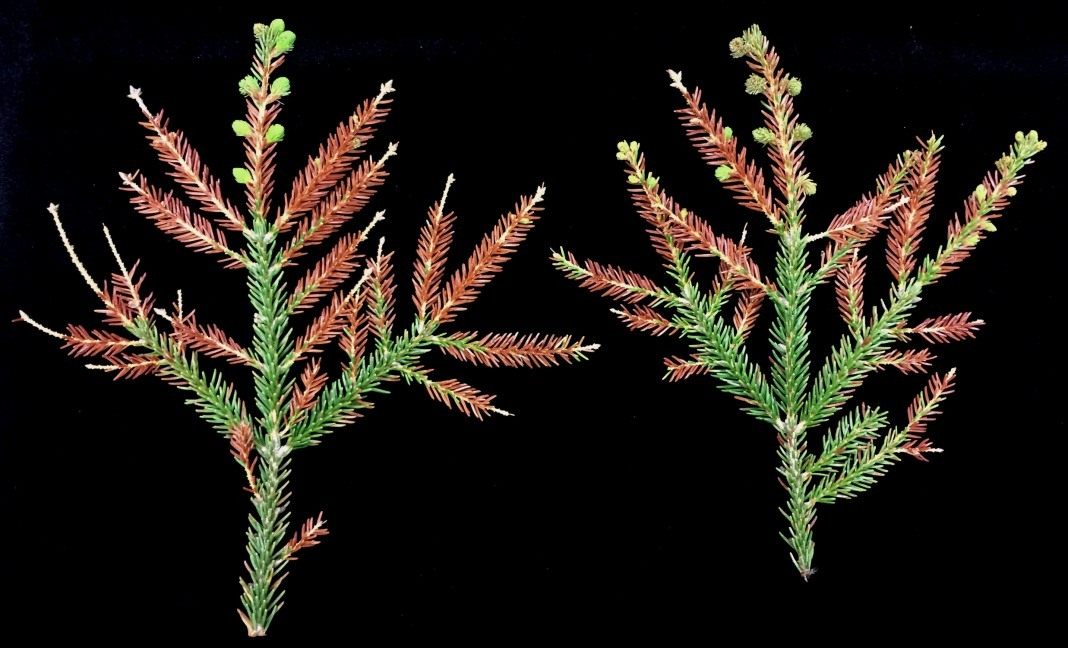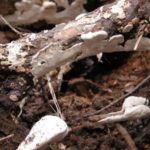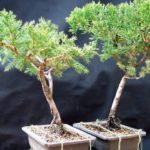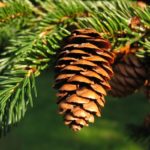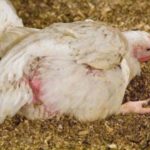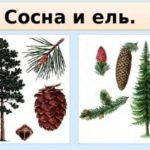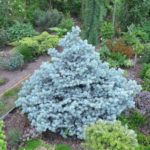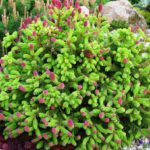Coniferous plants are considered quite popular. They have excellent decorative qualities, and therefore are often used in landscape design. Such crops are actively used to decorate garden plots, parks and public gardens. In order for plants to maintain their decorative properties, they need to be properly cared for. However, not every gardener knows how to save a spruce from drying out.
Why does spruce dry out?
If the needles dry out and fall off almost immediately after planting, this indicates the low quality of the planting material used.
The most common cause of problems is an overdried root system. Unscrupulous sellers often neglect the rules for maintaining seedlings. In addition, they often use various hormones that accelerate the growth of crops.
Also, the cause of needle drop in young trees may be a violation of planting conditions. Provoking factors in this group include the following:
- violation of planting deadlines;
- violation of procedure technology;
- incorrect choice of variety and variety of crop.
If the needles dry out several years after planting, it is worth analyzing the growing conditions of the crop. The causes of problems in this case include the following:
- change in average soil moisture parameters - the ground under the spruce should be moist, but not too wet, so the crop is watered regularly, but little by little;
- lack of sunlight - spruce trees need partial shade, while in shady places they develop poorly;
- lack of useful elements in the soil - the problem can arise from a deficiency of phosphorus, potassium or nitrogen;
- excess amounts of nutrients;
- influence of waste products of animals and birds.
Drying of needles may be associated with attacks of certain pests. Among them it is worth highlighting the following insects:
- Spruce moth. In this case, at the end of May, small brown balls form on the shoots. This is what female pests look like. A month later, they lay eggs, from which parasites emerge that absorb spruce sap. The affected needles become yellow and fall off.
- Spruce sawfly. Female parasites lay eggs in the needles of the current year's shoots. The pest can be identified by the accumulation of blackish pseudo-caterpillars at the ends of the shoots.They consume needles and cause the affected branches to become bare.
When plants are damaged, you can use biological products such as “Lepidocid”, “Bitoxibacillin”, or chemical insecticides – “Aliot”, “Pinocid”.
Diseases and how to treat them
One of the most common problems when growing spruce trees, which leads to the needles drying out and falling off, is the development of various pathologies. Pathogenic microorganisms absorb the juices of young branches, which provokes the suppression of biochemical processes and cell division of the affected tissues. The falling of needles is considered the most striking sign of the development of infection and leads to the slow death of the crop. In such a situation, special preparations are required. And you need to start doing this as quickly as possible.
Rust
This pathology is considered one of the most dangerous infections that develops when growing crops. It is considered nonspecific, therefore it actively spreads between all plants on the site.
The development of this disease is caused by various fungal microorganisms from the class Urediniomycetes. They infect both needles and bark of conifers. When this pathology appears on the plant, many spindle-shaped formations are formed that are orange or yellow-orange in color. They attack needles and tree bark.
As the pathology progresses, mucous discharge is formed in the affected areas, which has a viscous consistency. The most effective drug for fighting infection is Bordeaux mixture. You can also use such products as “Abiga-Pik”, “Ordan”, “Oksikhom”, “Hom”.If the pathology occurs in the heat, it is recommended to use any sulfur-based fungicidal agents.
Necrosis
This term refers to a disease that is associated with putrefactive lesions of shoots. It is caused by various pathogenic fungi. This pathology is considered nonspecific, because it rapidly spreads throughout the garden, affecting all plants and soil.
The first signs of infection include a change in the color of the bark and needles. The affected areas take on a reddish tint. After some time, small brown-black tubercles appear on the shoots. However, these areas may not dry out and die immediately. Dry fragments begin to crumble when the crop is severely damaged.
There are no specific treatment procedures in this case. To get rid of necrosis, it is necessary to trim and dispose of the affected fragments. When the tree reaches 15 years old, it will form a stable immunity to fungal necrosis.
Schutte
Only coniferous plants suffer from this disease. The cause of the development of Schutte is infection of ascomycete fungi. In this case, the pathology has several varieties:
- The present one most often affects immature seedlings. As the disease develops in spring and early summer, the needles turn brown and die. By the time autumn arrives, small yellow dots appear on the needles. Gradually they increase in size and acquire a dark color. Pinpoint apothecia appear in these places. They are the fruiting bodies that preserve the fungus. If the needles drop significantly, there is a risk of crop death.
- Common - this form of the disease is caused by another type of fungus. In this case, the pathology has the same symptoms as the real Schutte.
- Snow - fungal microorganisms that cause this type of pathology begin to develop under the snow already at 0 degrees. In this case, a gradual development of the mycelium film is observed. As the disease develops, it affects neighboring crops. After the snow melts, the affected branches turn brown and die. Affected needles become reddish-red. As they die, they acquire a gray color. In this case, the needles crumble, but remain on the branches. By autumn, black apothecia form there. In winter, before snow falls, spores spread from there to healthy needles. In snowy regions, Schutte can completely destroy coniferous plants.
- Brown – This disease is also called brown snow mold. This pathology leads to damage not only to spruce trees, but also to pines, firs, cedars, and junipers. Infection occurs in the autumn season. At the same time, the fungus continues to develop in winter.
It is important to consider that the risk of developing Schutte increases when growing spruce trees in shaded areas. The disease also occurs when plantings are crowded and there is a large amount of snow. To avoid the development of pathology, it is necessary to select seedlings of resistant species and provide them with proper care. It includes thinning of plantings and timely use of fungicidal preparations. In this case, it is important not only to spray the needles, but also to shed the soil.
Vertun
The development of this pathology is caused by infection with the pathogenic fungi Melampsora pinitorqua. During the active development of microorganisms, the upper fragments of the affected branches become covered with an orange or yellow-orange coating. After some time, infected shoots become deformed. At the same time, their tops dry out and die. This entails shedding of needles.Most often, the infection affects young plants. At the same time, trees older than 10 years almost do not suffer from this pathology.
Eliminating this disease can be quite difficult. Fungal spores are highly resistant. They are able to survive in fallen pine needles for several years. The most effective remedy that can be used to treat the disease is a solution of Bordeaux mixture with a concentration of 1%. As an alternative, it is permissible to use Polycarbacin. Its concentration should be 1%.
Fusarium
This pathology occurs quite often. Its appearance is caused by various fungi from the genus Fusarium. The first symptom of the pathology can be considered a massive change in the color of the needles. At the same time, the rich green color becomes red. Gradually, the needles die and crumble, the crown thins, and the shoots dry out.
To eliminate pathology, it is recommended to spray the plantings at least twice. This must be done at intervals of 14-20 days. If this recommendation is violated, the procedure will not give the desired results. It is necessary to treat fusarium immediately after its detection. To do this, it is important to use high-quality antifungal drugs. The most effective substances include Fitosporin-M, Maxim, Fundazol.
Cancer
This term refers to a whole complex of various infectious pathologies. However, quite often spruce trees suffer from so-called shoot cancer. This is a complex form of the disease, which is provoked by specific fungi Ascocalyx abietina Schlaepfer-Bernhard.
As the pathology develops, a slight redness appears near the base of the affected needles. After some time, the infection causes the needles to deform, forming a kind of umbrella.Gradually these formations crumble.
It is impossible to cure this pathology, since there are currently no specific drugs that can cope with the causative agent of the disease. Complex fungicides can stop the progression of infection. However, the tree will still gradually dry out and, as a result, die. Therefore, it is better to uproot and dispose of a cancer-affected crop. It is also necessary to get rid of fallen needles.
How to prevent future infections
To prevent infection of spruce and the development of dangerous pathologies, it is important to adhere to a number of recommendations. In this case, you need to do the following:
- Spray the spruce with fungicides. This should be done in early spring and autumn. This procedure helps get rid of many fungal microorganisms.
- Follow the landing rules. When planting several plants, it is important to avoid crowding them.
- Regularly water the plants and perform sanitary cleaning of the crown. Timely application of nutrients is also important.
- Clean the area from fallen needles.
- Thin out branches and perform sanitary pruning.
Drying of spruce may be associated with violation of agrotechnical recommendations or the development of various pathologies. The reason may also be due to pest attacks. To avoid problems, it is important to properly care for the plant and adhere to basic recommendations for preventing infections.


